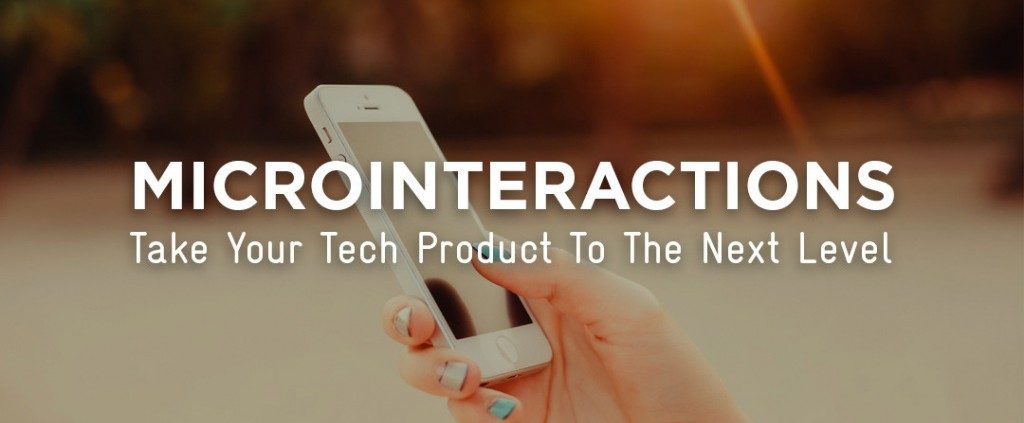Understanding Microinteractions in Mobile App Design
Ease of use is one of the key parts of mobile UI outline. Great convenience frequently includes microinteractions which are little reactions and practices from an interface directing how the UI ought to be utilized. These micro interactions characterize practices, empower engagement, and help clients envision how an interface ought to function.
Digital interfaces are the brokers amongst clients and their wanted objectives. Interface designers make encounters that help clients play out specific tasks. For instance, a schedule application has an interface that helps clients compose their assignments. Much the same as a Facebook application gives clients an interface to connect with their Facebook account.
In this guide, I will dig encourage into micro interactions for mobile applications. Little communications may appear to be insignificant yet they can immense affect the nature of a client’s experience. At the point when done appropriately, miniaturized scale associations feel like a certified part of the general versatile client encounter.
The Power of Micro-interactions
Much of the time the objective of a micro interaction is to give input in light of the client’s activity. This can help clients imagine how the interface moves or acts, despite the fact that it’s simply digital on a level screen.
Micro-interactions have control since they make a fanciful affair. On/off sliders don’t generally move like physical switches, however, they can seem to move along these lines through animations.
The little subtle elements may appear to be immaterial from an advancement stance, yet from a client encounter outlook they really have the effect between an OK application UI and an exceptional application UI.
Incredible micro interactions make the client feel remunerated for making an action. These activities can be rehashed and instilled into the client’s conduct. They can figure out how to utilize an application in view of these smaller micro interactions. At the point when the client plays out a conduct, these little cooperations flag “yes, you can associate with me!”
Investigate the cases found in Google’s material outline specs. The documentation really has a whole area committed to the material movement. Spatial connections are a major a portion of this condition, however, movement can direct more than simply spatial connections.
How Microinteractions Work
A solitary microinteraction fires at whatever point the client draws in with one a player in an interface. Most microinteractions are energized reactions to the client’s signal. So a swiping movement will react uniquely in contrast to a tap or a flick.
Blink UX did an incredible post examining the minor subtle elements of microinteractions. These little activities ought to take after an anticipated procedure that the client can learn about each cooperation in the application.
Microinteractions control clients through an interface by offering reactions to practices. Once the client realizes that an on/off slider can move, they know it’s intelligent. In view of the reaction, they’ll likewise know whether a setting turned on or off. At the point when a catch appears as though it can be tapped the client instinctually knows they can connect with it.
As indicated by UX Pin, each essential microinteraction can separate into four stages, yet I’ve outlined the procedure into three stages.
Action – the client accomplishes something like a flick, swipe, tap, and hold, or some other association.
Response – the interface reacts in view of what necessities to happen. Swiping a screen may move back in the program history, or tapping an ON/OFF slider may turn off a setting.
Feedback – this is the thing that the client really observes as the consequence of the cooperation. At the point when the client swipes in a portable program, it may glide the past page up to show up “on top” of the screen. The on/off slider may float easily or develop bigger when weight is connected to the screen.
These little activities can be expert without liveliness; however extraordinary microinteractions offer a reasonable feeling to the level computerized interface, which for the most part comes as practical movement impacts. These revive the interface and energize more client connection.
Animated Event App UI
The principal case is a clever card animation feature made by Ivan Martynenko. You’ll see a modest bunch of microinteractions in this outline; outstandingly card swiping and traveling through details
At the point when tapping on the card it develops in size. Furthermore, when tapping the Subscribe catch the client’s profile photograph slides into the rundown of endorsers. Everything feels extremely instinctive and very regular to the interface.
Interactive Exercise Screen
This inventive portable practice movement originates from fashioner Vitaly Rubtsov. It demos a client sparing their workout for one arrangement of squats.
See every movement has a similar versatile ricochet impact when the menus open and snap shut. This is additionally genuine when the movement is checked as “Done”. Consistency is key with microinteractions since they ought to all vibe associated with a similar interface.
Search App Microinteractions
Short, sweet, and to the point. I think this best portrays these inquiry application microinteractions outlined by Lukas Horak. Each movement is fast yet observable.
This is the means by which you ought to plan microinteractions to stay away from over-many-sided quality. On the off chance that the interface would stack speedier without the liveliness then why try including it? Speedy activities keep the client traveling through without stalling the experience.
Fitness Goal Microinteraction
I think truly hit this one out of the recreation center with his wellness objective microinteraction. The screens all have this sentiment jiggly solidify o in light of the fact that the shapes move so smoothly.
However, the interface likewise feels strong and useable. It demonstrates that microinteractions made with a reason can at present be fun and engaging additionally useful and practical.
Pull to Refresh Animation
Here’s one of my outright most loved draw to-revive movements made by the group at Ramotion. This not just impersonates a liquid with the drawing activity, yet the reaction liveliness easily associates from a sprinkle of fluid into a stacking circle.
Tab Microinteraction
Selected gadgets are entirely normal for mobile applications as a result of the littler screens. I truly like this microinteraction made by John Noussis, in spite of the fact that I think it’d be more viable at a speedier speed, however, the activity itself is great and well thoroughly considered.
The tab grapple bolt floats over to the privilege pretty much as new substance skips in from the privilege. It gives the dream of the whole screen physically moving to one side. The activity is impeccable, yet since it’s so moderate I think most clients would get irritated following a couple days.
Preloading Animation
I haven’t said much in regards to stacking bars in this post, yet they’re pretty much as important to the general experience. Most clients would prefer not to sit tight for information to stack, yet they certainly would prefer not to gaze at a clear screen while it loads.
Bret Kurtz did this stunning preloading screen that is both fun and useful. The client can really be engaged watching this little movement rehash. They can likewise be consoled that the application is as yet stacking their information and hasn’t slammed.







Leave a Reply
Want to join the discussion?Feel free to contribute!